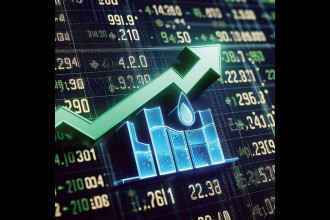-1725016709.jpg)
With seven months of 2024 behind us, it is apt to present the half-time report of the commodity market. Given the plethora of news and events driving the markets, it was a volatile first half especially in the precious metals and energy bracket. Prices surged to new highs with copper, gold and cocoa attaining all-time highs, and natural gas soaring 74%. Prices pulled back in June but continued a bullish rally in July with growing concerns that the US economy was slowing down.
Metals
Initially, precious and base metals remained relatively stable amid excess supply and weak demand in advanced economies. Following a pronounced bearish trajectory in 2023 reflecting declining demand across major economies, metals stabilised but observed a notable bullish rally from March onwards. Gold having opened at $2,062.68 per ounce, soared to reach an all-time high of $2,483.78 per ounce in July, an appreciation of 20.42%. Having opened at $23.79 per ounce, silver jumped to $32.51 per ounce in May before experiencing back-to-back bearish months. Copper prices scaled an all-time high of $5.1845 in May before correcting in the last two months. Copper skyrocketed due to concerns in supply coupled with signs of resilience in global economic activities. Metals are expected to remain relatively unchanged in 2024 before rising steadily in the next year given a strong rally in global industrial activities and strong demand driven by the growing production of technologies especially in renewable energy.
Energy
Energy products observed considerable volatility with intensifying concerns about the conflict in the Middle East, the tight supply situation in response to OPEC+ production cuts and a growing global industrial activity. Recent decreases in US supply and revised hawkish projections from the International Energy Agency (IEA) shifting from a predicted surplus to a modest deficit have further boosted market confidence. Geopolitical developments in the Middle East and disruptions in Russia’s refinery sector have escalated concerns about broadening instability in the oil supply. After a bearish 2023, crude oil started 2024 at $71.65 per barrel before climbing to $87.63 per barrel in April. Following the hike, prices stabilised, and they have since traded around a range of markets. Crude oil prices are forecasted to average around $84 per barrel in 2024 before tapering to $79 per barrel in 2025.
Natural gas has observed an interesting year so far. Prices opened at $2.639 per MMBtu following which the energy product spiralled downwards to reach $1.505 per MMBtu in March. The prices have traded upwards since then. The value of natural gas reflected robust supply and deteriorating demand due to mild weather forecasts. As per analysts, the prices are forecasted to remain significantly depressed in 2024 due to excess global supply levels and paradigm shifts in trade patterns. In 2025, a reversal is expected with prices expected to rise as a result of an uptick boosted by strong exports.
Agriculture
Agricultural commodities declined in the first quarter due to favourable supply scenarios and growing exports from the Black Sea region. However, unfavourable weather conditions, due to El Nino, pushed cocoa and coffee to record high by April. Prices are expected to observe a marginal decline in 2024 and 2025 driven by increasing supplies and less than influential El Nino.
Conclusion
The commodities complex will be exposed to a confluence of forces in the remaining months of 2024. Weather-related volatility could have effects on commodity supply chains which would be bullish for gas, oil and agricultural prices. Central banks could impose upside risks for gold and silver. With the momentum of gold purchases fading, there could be an influx of other factors pushing the metals on a bullish momentum. Also, with the price forecasts not factoring in further conflict escalation, risks remain stemming from the possibility of conflict in the Middle East and its consequent impact on energy production and exports. The second half of 2024 looks like a winner-takes-all scenario with bullish and bearish factors all inevitably grabbing the limelight in a push towards the finishing line, i.e. end of 2024.
|
|






